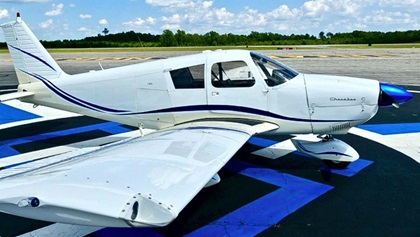Savvy maintenance/Opinion
Tulip fever: You snooze, you lose?

How crazy? Well, I’m looking at a listing for a very low-time 2021 Cirrus SR22 G6 GTS with an asking price of $1.25 million. Seriously? Cirrus’s 2021 factory price list shows a price of $886,800 for this airplane brand new, which strikes me as awfully pricey for a four-seat single-engine piston airplane. Why would anyone pay a $363,200 premium for a slightly used SR22? Perhaps because the slightly used one is available today and a new 2022 model from the factory has an eight-month wait time. Buyers have itchy trigger fingers at present, and they just don’t want to wait.
All this somehow reminds me of the Dutch “tulip fever” of the 1630s (admittedly slightly before my time). It was a textbook bubble then and strikes me as unsustainable now.
You snooze, you lose?
My company offers a nationwide prebuy management program for buyers of piston GA airplanes. Lately, we’ve been seeing an increasing number of buyers who are in such a hurry to snap up used airplanes “before they get away” that they’re shortcutting prudent due diligence. Some opt to skip the prebuy examination entirely and rely on “a fresh annual” performed by the seller, while others consent to a prebuy examination that is less than independent and thorough. They do so at their peril.
Take the case of Chuck (not his real name), a first-time airplane buyer who lives in Macon, Georgia, and asked us to manage a prebuy on a 1966 Beechcraft A23 Musketeer located on the east coast of Florida.
Lately, we’ve been seeing an increasing number of buyers who are in such a hurry to snap up used airplanes “before they get away” that they’re shortcutting prudent due diligence.We always encourage prospective buyers to let us perform a preliminary logbook review prior to them making an offer—something we do at no charge because we don’t want them to spend money on a prebuy examination unless we’re sure the airplane looks like a decent purchase candidate with reasonably complete logbooks with no obvious red flags or show stoppers. However, Chuck was in too much of a rush to take advantage of this free service. By the time he contacted us, he’d already made an offer on the Musketeer, had it accepted, signed a contract with the owner, and gone to Florida to test-fly the airplane. During the flight, the owner advised Chuck that the aircraft had just completed its annual inspection.
It quickly became obvious that Chuck had already decided he wanted to buy this airplane, and he considered the prebuy a mere formality. “I have flown the airplane and was happy with it,” Chuck told us. “I did notice that the brakes were spongy, especially the right brake, and the owner said he just got the airplane out of annual and was going to take it back to get that corrected. The transponder’s biennial certifications were not current, but the owner says he had it certified since my test flight. Incidentally, the owner is a student pilot and will not be able to ferry the airplane to a different airport for the prebuy.”
When we finally were able to review the Musketeer’s logbooks, we saw an annual inspection signoff in the engine and propeller logbooks, but there was none in the aircraft logbook. We told Chuck we weren’t sure it was legal to fly.
We identified a very good shop with Beechcraft experience about 40 nautical miles away in West Palm Beach, Florida, at North Palm Beach County General Aviation Airport (F45), and the shop’s director of maintenance agreed to perform the prebuy examination if we could get the airplane ferried there. Chuck asked the Musketeer’s owner to have his mechanic sign the needed annual inspection logbook sticker in order to make the airplane legal to fly, and to arrange for his CFI to ferry the airplane to the North Palm Beach airport. The owner agreed.
Meantime, we were frankly worried about this Musketeer because it had been living outdoors in the extreme corrosion-risk environment of the Florida coast for more than a decade. We knew these airplanes have a history of wing spar corrosion, and in general we’ve seen a lot of corrosion issues with Florida-based airplanes. So, in this case we recommended that the prebuy be done following the full Beechcraft 100-hour inspection checklist. The Palm Beach shop quoted about $2,000 in labor, and Chuck said he was good with that.

Jumping the gun
“I have a few things I’d like done to the airplane,” Chuck told us. “I’d like to have front seat shoulder harnesses installed, replace the old attitude indicator with a new-style one, and replace the old directional gyro with a horizontal situation indicator. I’d also like to install a JPI EDM-730 engine monitor. Can we ask the prebuy shop to do this work while they have the airplane opened up for examination?”
We reminded Chuck that he didn’t yet own this airplane, and that it would be inappropriate to perform any alterations or upgrades to it until the deal was closed and title was transferred. “We can certainly ask the shop to provide quotes for this work, but you can’t pull the trigger on any of it until you own the airplane,” we said.
The airplane was ferried to the airport and the prebuy began. First indications were positive. “Compression very good: 76, 78, 76, 78,” the director of maintenance reported. “Exhaust valves look good under the borescope. We’re working on getting you the images.”
Two days later, however, the tone of the shop’s feedback had changed markedly. “We are just finishing the examination, and have identified about 40 significant discrepancies,” the director of maintenance told us. “Our parts guy has the discrepancies now and he will be getting prices of parts and writing up repair estimates which we hope to get to you later this afternoon.”
Ugly verdict
 Later that day, as promised, the director of maintenance sent us a 40-item discrepancy list, including a spreadsheet containing repair estimates for many of the discrepancies. “Incidentally, the most recent inspection in the aircraft logbook was signed off by an A&P as a 100-hour inspection, so I think the aircraft is technically out of annual,” the director of maintenance reported.
Later that day, as promised, the director of maintenance sent us a 40-item discrepancy list, including a spreadsheet containing repair estimates for many of the discrepancies. “Incidentally, the most recent inspection in the aircraft logbook was signed off by an A&P as a 100-hour inspection, so I think the aircraft is technically out of annual,” the director of maintenance reported.
The prebuy findings reinforced our fears about Florida and corrosion. “I am providing photos of the severely rusted spark plugs, the severely rusted and warped right brake disc, the severely sagging engine shock mounts, and the wheel bearings that look like they haven’t been packed with grease for a long time.”
Review of the shop’s detailed discrepancy list and repair estimates revealed the following issues (among others):
- Last annual inspection signoff on the aircraft was four years ago.
- No record of airworthiness directive compliance for the past 10 years, with eight recurring ADs identified with no record of compliance.
- Last engine major overhaul was performed by an individual A&P, not by a certified engine repair station.
- Heavy corrosion on engine cowling, engine intake tubes, engine baffles, fuel filler ports, fuel strainer retention bolt, spark plugs, brake discs, wheel bearings, and races.
- Numerous propeller spinner screws seized, no evidence that the spinner has been removed despite an annual inspection signoff in the propeller logbook.
- All three landing gear shock strut doughnuts are severely rotted—cost to repair is $9,800.
- All landing gear wheel bearings and races are badly worn and corroded—cost to repair $1,000.
- Right brake disc worn beyond limits and corroded—cost to repair $400.
- Upper engine mounts sagging and have large gaps between isolator and mount pad—cost to repair $1,300.
- Vacuum pump shaft sheared, with oil leaking from Garlock seal—cost to repair $800.
- Magnetos have not been overhauled or inspected and repaired as necessary for 20 years—cost to overhaul mags $2,200.
- Whiskey compass dry, correction card missing—cost to repair $300.
- Both control column guides broken—cost to repair $1,300.
- Both aileron rod ends badly worn—cost to repair $1,600.
- Flaps do not retract fully.
- All cabin air controls are seized.
- Tail strobe is inoperative.
- Cabin fire extinguisher missing.
“We’re not quite finished with the checklist,” the director of maintenance told us, “but this may be enough for you to make a decision about this aircraft.”
Indeed!
“We have reviewed the estimate with Chuck and he has wisely decided to walk away from this aircraft,” we advised the director of maintenance the next day. “Please post an invoice for the work completed by your shop. Great prebuy exam, very much appreciated! Please make the aircraft ready for flight. The owner has been advised that the aircraft appears to be out of annual and that he will need a properly signed off annual inspection entry or a ferry permit to fly the aircraft home.”
Keep in mind that this Beech Musketeer was represented by the seller as “fresh out of its annual inspection.” Imagine if Chuck had relied upon that rather than conducting an independent prebuy.
Epilogue
Chuck found another purchase candidate within his budget, a 1965 Piper Cherokee 180 based in North Carolina, and submitted scanned logbooks for our preliminary logbook review.
The review turned up no red flags or show-stoppers. It looked like a well-maintained airplane, and the fact that it spent most of its life living well inland in North Carolina rather than on the Florida coast was encouraging. We advised Chuck that this seemed like a viable purchase candidate.
Chuck had us set up a prebuy of the Cherokee for him. We chose a shop at Triangle North Executive Airport (LHZ). The director of maintenance there agreed to perform the prebuy examination and quoted $1,800 to do the full Piper 100-hour inspection checklist. It took about a week to get the Cherokee ferried there and the examination performed.
“We are convinced that this is a very clean aircraft,” we told Chuck after talking to the director of maintenance and reviewing the prebuy findings. “The borescope inspection revealed no cylinder or valve issues and the oil filter was clean. The magnetos are due for 500-hour inspections, but the seller agreed to pick up that cost. Our recommendation would be for you to move forward and close on the aircraft.”
Chuck closed the deal on the Cherokee, flew it home, and has been flying it at least weekly ever since. We love happy endings. 

